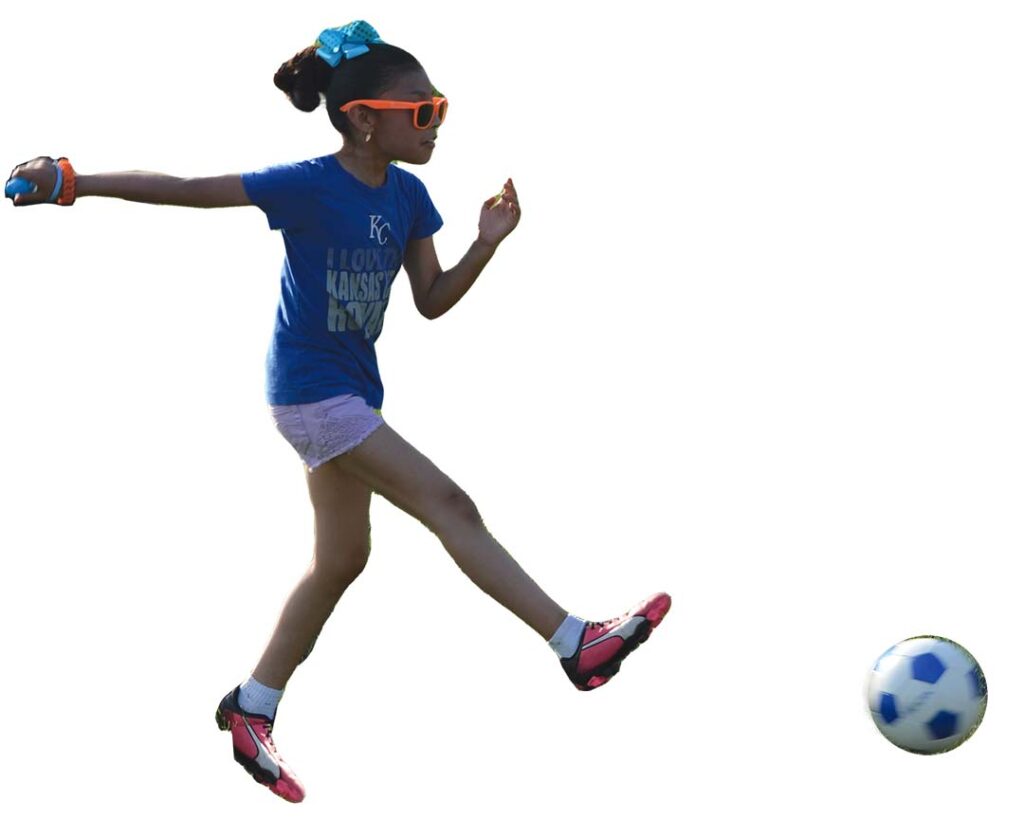by Aniaya Reed

Can you name a black female or male soccer player? I’ll go first, Crystal Dunn, United States Women’s National Team Defender. She was the first black woman I saw play soccer on the big screen. She set the blueprint for me. I looked up to her a lot when I first started watching soccer. Although I was not a defender, it was refreshing to see someone who looked like me playing professional soccer, and I aspired to be just like her.
Soccer is originally known as fûtbol in some European countries like France, but known as Football in the United Kingdom. The history of soccer in the United States holds a lot of different roots. Influences from the Scottish, Irish, Germans, Italians, and many more brought the popular game to America. Soccer is not as popular as American football, but the sport is particularly popular in Europe, Central and South America, and Africa with growing influence in Asia.
Now what about the most influential soccer players in the world? You hear about Alex Morgan, Megan Rapinoe, Pele, Lionel Messi and Cristiano Ronaldo, but I would like to shed light on the ones who don’t get a lot of the spotlight.
There are currently 3 black female professional soccer players on the United States Women’s National Team. (USWNT) There are currently 12 black male professional soccer players on the United States Men’s National Team. (USMNT) In the MLS (Major League Soccer), 24% of players are Black or African American, and 43% of players in the Premier League, (English Football League), in 2021 are Black or African American. I was unable to find statistics on black female professional soccer players in the United States and Europe.
Which begs the question, why are there fewer black women like me playing competitive soccer? I started to think about my own upbringing into the sport, and my answer is: the pathway a black girl has to go through. For me, after I finished recreational soccer I continued on to competitive soccer. All of the competitive clubs were in Lee’s Summit, Overland Park, Wyandotte County and Olathe, each about a 30-40 minute commute from my house. On top of the drive, the cost was also very high, ranging anywhere from $2500 – $2900 for uniform packages, equipment, and other expenses. I was also on multiple different teams during my competitive club journey, and I was always the only black girl or the second black girl on the team.
The areas these clubs are in are nice neighborhoods, with expensive housing, shopping, etc with most of the population being white. From team to team, I felt like I did not belong, but I kept my mindset of going to play soccer in college, and I did. When I got to high school it was not different.
There were the same amount of black girls playing on my team, and the opposing teams as well. At this point, I had gotten used to it, but I could not shake the feeling that I was being judged by being the only melanated person on the team. During my senior year of high school, I got recruited from many schools to play, but in the end, I chose Nebraska Wesleyan.
I knew before I visited Nebraska Wesleyan that this was a PWI (Predominately White Institution), but I was used to that and it did not faze me to have white teammates. However, I was the only black girl on the whole roster. It did not stun me, because it was Lincoln, Nebraska and I was not expecting there to be black people in general. However, this has to be one of my favorite teams I have played on.
More black girls would play soccer if they had the correct pathway and finances. Soccer is a pretty expensive sport, especially if you want to play at a high level. ECNL (Elite Clubs National League) teams cost $8,000-$10,000 in fees annually, but it is a great way to gain exposure to recruiters, coaches and college teams, sometimes even professional teams, but you have to go through multiple tryouts to get to that point.
Another reason is exposure to soccer. Soccer is not a known “black-sport” like basketball and football are considered to be. People place the label “white-sport” on it, because there is a lack of black players in leagues. Soccer is not a white sport and football and basketball are not black sports. Those labels are demeaning on both sides, anyone can play anything no matter their race.
As far as coaching and recruitment, a lot of coaches do not take into account the lack of diversity they have on their teams. The lack of diversity diverts melanated women and men from their teams, because they don’t see anyone that looks like them. I’ve felt that way on teams, but I realized that the coach recruited me, because he saw potential in me, just like the rest of my teammates.
If there was more diversity in American soccer there would be less isolation felt by black players. I know I always get the constant “you’re so fast!” but I know I am, I don’t need a constant reminder. It feels like that is the only thing they see when I am on the field, and I know other players can relate.
Northeast Kansas City is also not in the soccer realm. There are not many competitive soccer clubs, but Ryogoku soccer club does have soccer services for the kids in that area. There are high school soccer teams in Northeast that play in their own districts which gives students the opportunity to have some exposure to the game.
With the high amount of minorities and diversity in Northeast it would be cool to see students and adolescents create their own soccer group or club, and just enjoy the game. I hope in the near future competitive clubs will have access to the Northeast.
















